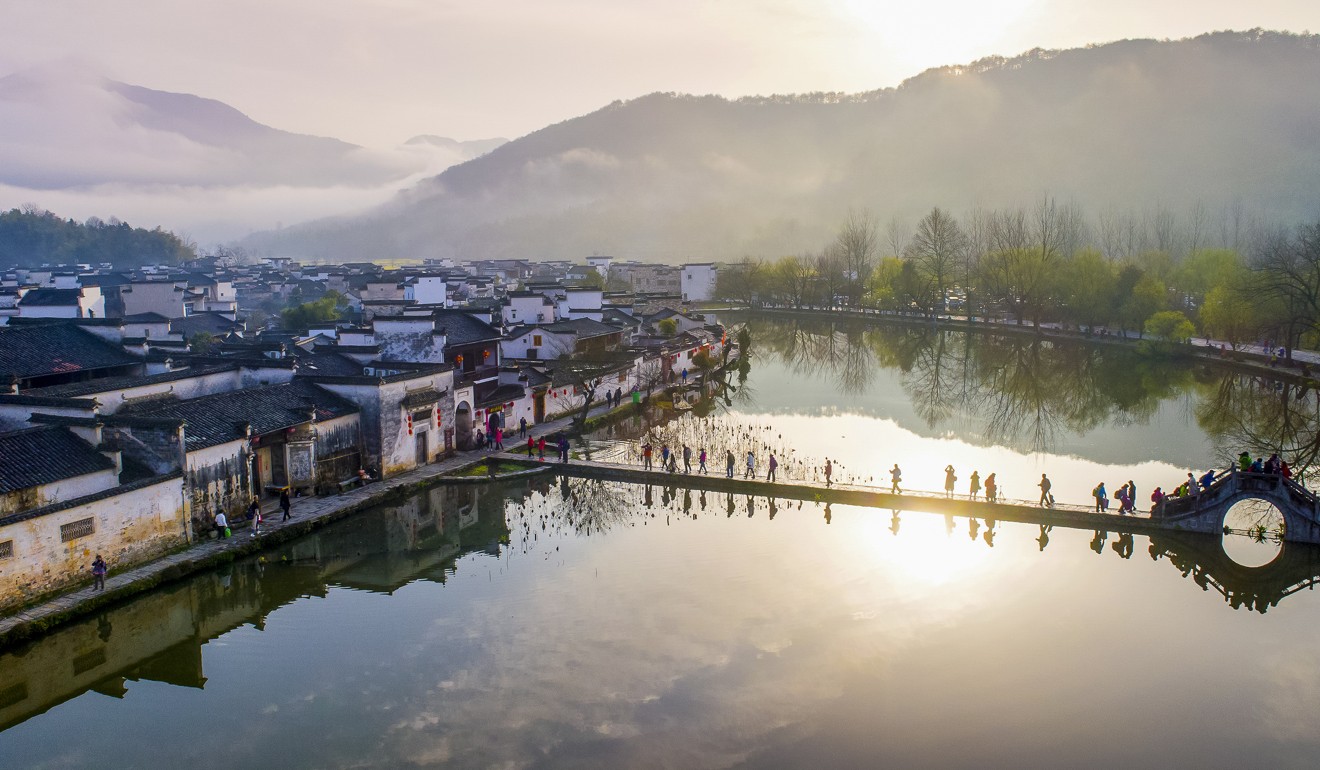
China measures how ‘green’ its cadres are – but will it be enough?
New index puts the environment above economic expansion. Not everyone’s convinced
China unveiled a “green development” index this week as a way to measure how local governments perform on the environment – and push them to change – but some analysts say it may not be enough.
The index puts the environment above economic expansion as Beijing tries to force local cadres to change their mindset when it comes to development. Their careers will now be linked to how environmentally friendly they are, as measured by the index.
It is compiled by the statistics bureau, economic planning agency and the environment ministry, but significantly, the Communist Party’s Central Organisation Department – which decides who is appointed and promoted – is also involved.
Tackling the choking smog that plagues Chinese cities is one of President Xi Jinping’s key campaigns. He has played down the importance of headline growth, urging cadres to focus more on the pollution fight.
Although gross domestic product is likely to remain an important indicator, Xinhua reported that the annual index was “a new yardstick in measuring the performance of regional development and local government” in China’s efforts to do something about pollution.
However, the rankings contradicted the results of a “public satisfaction” survey on the environment conducted by the National Bureau of Statistics and released along with the index.
The survey had Tibet ranked first for public satisfaction with the environment, followed by Guizhou, Hainan, Fujian and Chongqing. Beijing was second from the bottom, the worst being neighbouring industrial province Hebei.
Ning Jizhe, head of the statistics bureau, put that discrepancy down to the index and the survey measuring different factors.
The index takes into account use of resources, governance, environment quality, protection of the ecosystem, growth quality and “green lifestyle”, according to the bureau.

Wang Canfa, a professor at the China University of Political Science and Law, said the new index showed Beijing was serious about cleaning up pollution.
“In the past three decades, local governments have all followed a similar path – let the pollution happen and deal with it later,” Wang said. “Now that the top leadership is serious about environment protection and the focus has shifted from speed to quality of growth, they’re putting these sort of systems in place to make the local governments behave.”
China first tried to measure the environmental cost of its economic growth more than a decade ago. The “green GDP” indicator, in 2006, found that pollution had caused 512 billion yuan (US$78.1 billion) in economic losses in 2004 – or about 3 per cent of that year’s GDP. The first report was so shocking that it was not published again until 2013, when it said that had environmental damage been included in the calculations for 2010, it would have cut GDP by 3.5 per cent.
Since then, the “green GDP” data – compiled by academics and put out by the environment protection ministry – has not been released. One government source told the South China Morning Post that the “green GDP” calculation was still produced every year but the results were made known only to the top leadership for reference.
The new index measures environmental factors from another perspective, according to analysts. It takes into account the quality of the environment as well as investment and efforts made to clean it up, and is expected to come up against less opposition from local officials.
It is based on 55 factors including energy consumption efficiency, carbon emissions, air quality, per capita disposable income, and research and development spending.
Use of resources has the most important statistical weight, at 29.3 per cent, while environment quality accounts for 19.3 per cent and treatment of the environment 16.5 per cent. Quality of economic growth is at 9.2 per cent.
The weighting of these statistical parameters clearly reflects the top leadership’s direction on the environment, but analysts say it will be up to local governments to decide how important the index will be in officials’ appraisals.
Wang Jun, chief economist with Zhongyuan Bank, said the index reflected Beijing’s goal of coordinating economic development with environment protection.
“It is definitely not discarding the goal of GDP growth,” Wang said. “This index is trying to make local officials pursue environmentally friendly economic growth.”
Ma Jun, director of the Institute of Public and Environmental Affairs, a non-governmental organisation based in Beijing, noted there was leeway when it came to cadres’ appraisals, based on differences in the local conditions.
“Basically, the design of this index is OK, as China is a vast place and the environmental conditions do vary a lot across the country,” Ma said. “China has a strong government, but there is no guarantee this top-down approach will succeed. It might also take participation and supervision by the public and NGOs.”
As pressure mounts to meet both growth and environmental targets there is a risk that some officials will take extreme measures to achieve them. Last year in Xian, Shaanxi, three officials were detained after equipment at an air quality monitoring station was found stuffed with cotton to filter the air and make the data look better – they even removed surveillance tapes to cover up their deception. It worked for a few months, but was eventually uncovered by inspectors.
Peng Yingdeng, a researcher at the National Engineering Research Centre for Urban Pollution Control, said the public should be given a bigger say in how their local governments were performing on the environment – especially given the contradictory results of the index and the survey.
“The discrepancy between the high ‘green development’ rankings of some cities and where the public ranks them makes the index less convincing,” Peng said.
Additional reporting by Frank Tang and Zhuang Pinghui

